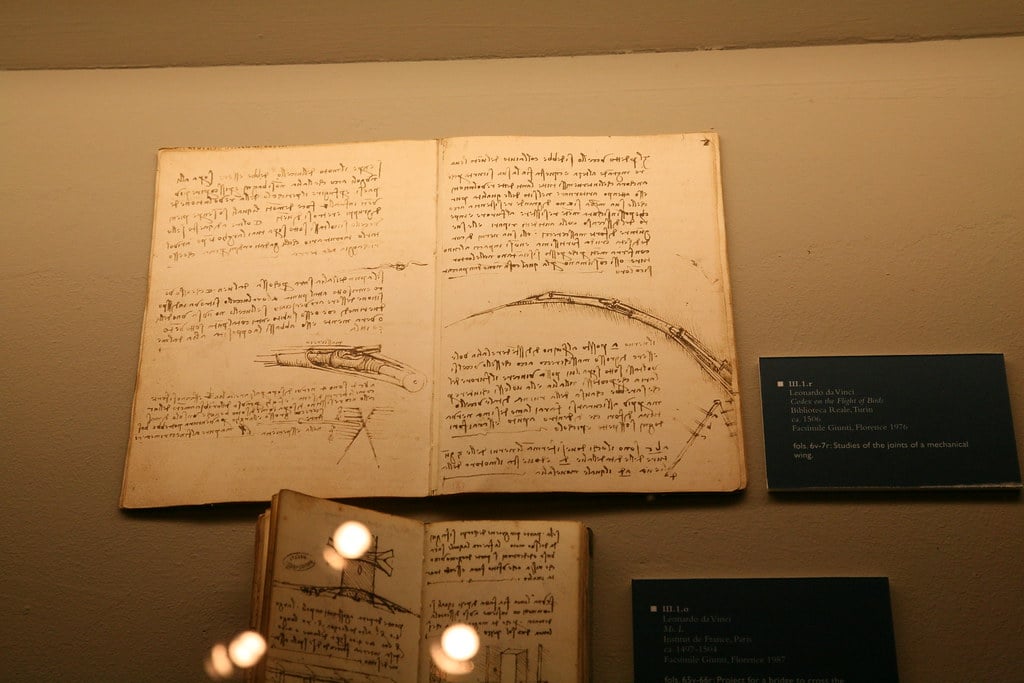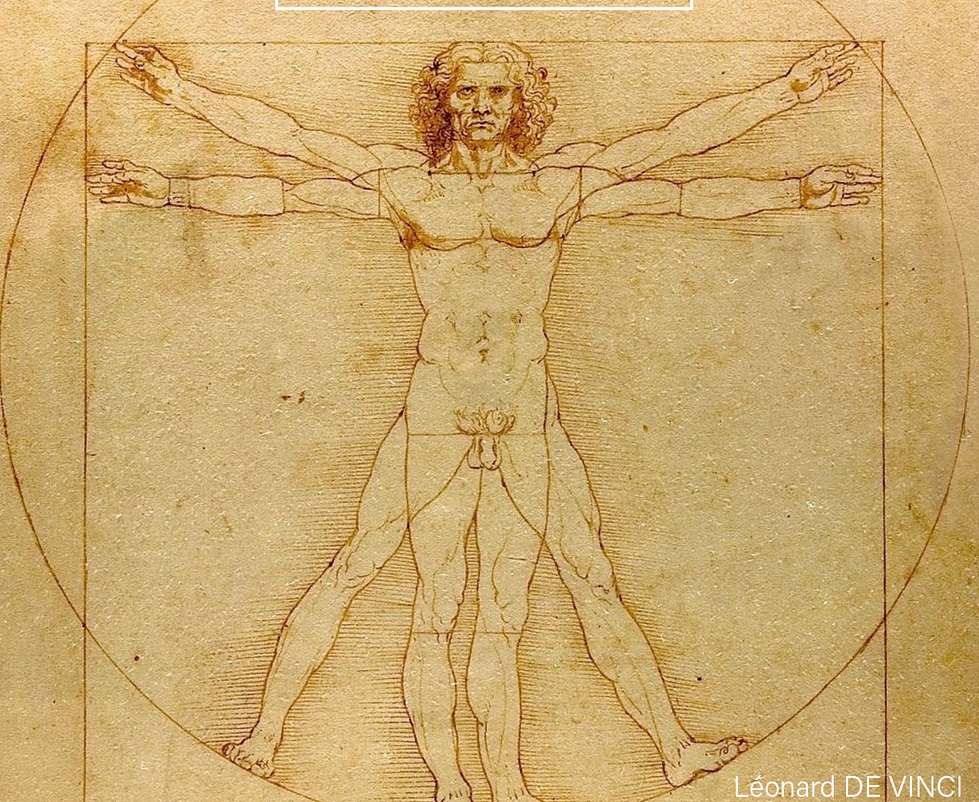
«Mona Lisa» by thinkrorbot is licensed under CC PDM 1.0
Painter, inventor, writer, architect, mathematician, anatomist, military engineer and a long etcetera, give an idea of the multiple aspects of the talent of Leonardo da Vinci (1452 – 1519), one of the greatest creatives in history.
Born in Vinci, Florence, he was a man of infinite restlessness and curiosity, a mix between artist and scientist that still amazes us today.
For his great creations is considered the first great artist of the Italian Cinquecento. We go back to the first two decades of the 16th century, at the height of the Renaissance, with the rule of the Medici in Florence.
In this post you will find some curiosities about his peculiar life.
Table of Contents
Did not go to school
Despite the fact that his father was a well-known and wealthy notary at the time, Leonardo did not attend school, although he did take basic classes at home. This could be because he was an illegitimate child, taken out of wedlock, whose mother is believed to have been a peasant woman. Despite not having been to school, his curiosity in various disciplines was inexhaustible.
He learned painting in Verrocchio’s workshop
He began his training by going as a teenager to the workshop of the famous painter Andrea del Verrocchio in Florence, where he soon stood out for his brilliant artistic talent.
Spent time in the dungeons
He was accused of sodomy along with other boys from Florence, something that could not be proven at the time but that would leave him marked for life, fearing persecution and accusations.
Invent the sfumato
Despite only having about 20 works of painting, Da Vinci proposes a new perspective system in them, discarding the linear perspective for falsifying the natural vision of things, since nature is changeable and fleeting, thus giving rise to the aerial perspective. In this perspective, the bifocality of vision is taken into account, creating blurred profiles showing transience, the well-known Da Vinci sfumato technique.
Dissected multiple corpses clandestinely
Da Vinci was an inveterate anatomist, carrying out a large number of human and animal dissections (something forbidden from the point of view of prevailing Catholicism), thus creating more than 240 scientific illustrations of great detail.
He wrote without rest and in a speculative way

«Leonardo Notebook» by twid is licensed under CC BY-SA 2.0
Da Vinci filled pages and pages of his well-known notebooks with everything he saw and learned, accounting for the smallest detail. Through his words we can learn about the large number of aspects that he touched, from painting to architecture, through botany and a multitude of themes. In addition, he wrote in a speculative way, that is, from right to left, thus protecting his words from possible snoopers.
It is said that he was dyslexic
From the analysis of his writings, it is deduced that Leonardo had dyslexia.
He designed multiple machines, forerunners of great current inventions

«Museum of Science 2017» by AnubisAbyss is licensed under CC BY-NC-SA 2.0
He was a war engineer, designing machine guns, cannons, tanks… and not only that. He also created prototypes of self-propelled vehicles, machines with the intention of flying … and a myriad of inventions.
Large number of unfinished works
Leonardo made multiple sketches of works that he did not carry out and he also left many works unfinished. Such was his inexhaustible curiosity that he was constantly starting new projects. Many times, being such a perfectionist, he did not like what he created and left it half done. His is the phrase “Art never ends, it only does when it is abandoned”.
The vitruvian man

«48/365 Homme de Vitruve» by unsingequiparle is licensed under CC PDM 1.0
According to the architect Vitruvius, architecture is an imitation of nature. He studied human proportions and the mathematical problem of squaring the circle in relation to the body. Leonardo, faithful follower of the architect, made the famous drawing of the Vitruvian man, with great mastery.
The Mona Lisa or Gioconda, his best-known and most enigmatic painting
In it we can see Leonardo’s mastery of expression and also the application of his technique of sfumato. His enigmatic smile, as well as the many stories surrounding the painting, have made this work one of the most famous of all time.
And you, what are you waiting for to develop all your creative curiosity as Leonardo?


